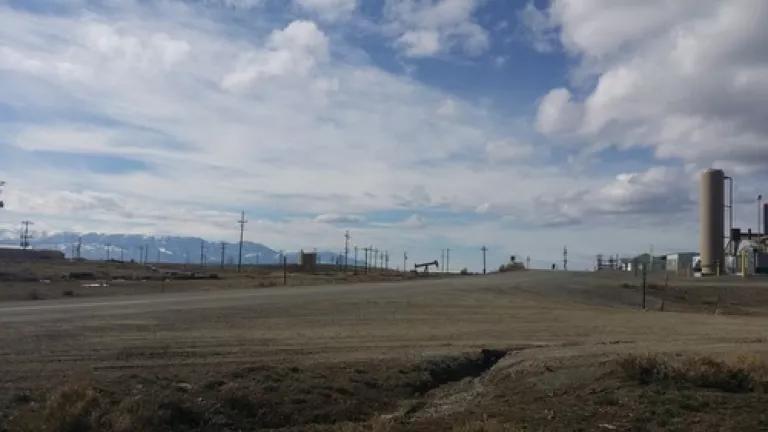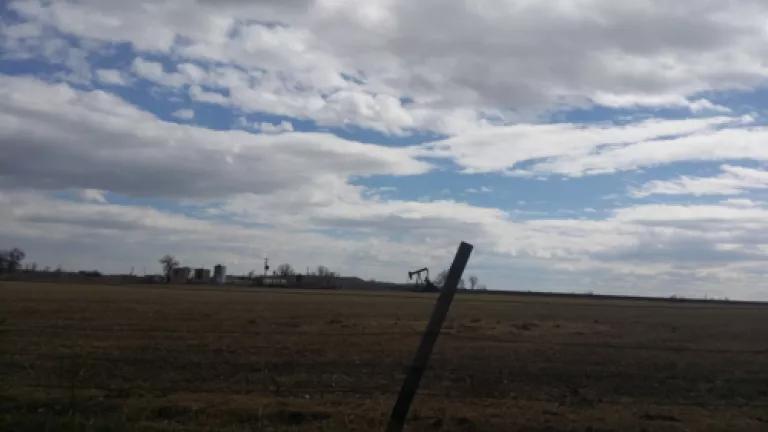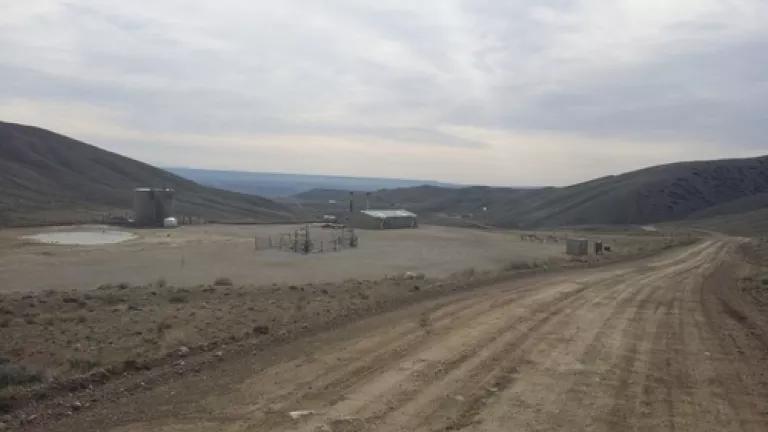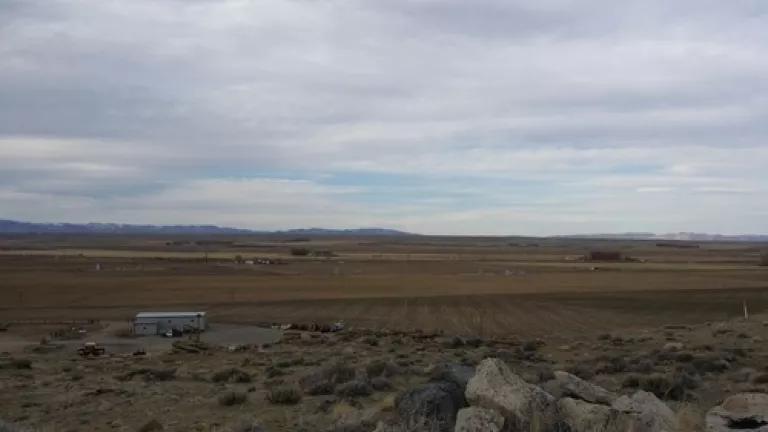
I recently had the opportunity to see and experience firsthand some oil and gas development in Wyoming. The first stop on my tour was one of the state’s largest producing oil and gas fields, Elk Basin. If I had to choose one word to describe the area, it would be “overwhelming.” I was overwhelmed by the size of the field—it encompasses nearly 12,000 acres. I was overwhelmed by the density of development— wells, pipelines, transmission lines, compressor stations, pump jacks, liquid tanks, trucks, flares and pits were all I could see in any direction I looked. I was overwhelmed by the smell—I later learned from the rusty signs eaten away by the corrosive gas that a likely culprit was Hydrogen Sulfide (H2S), a toxic gas that accompanies oil and gas deposits in many parts of Wyoming. And I was overwhelmed by the proximity of this development to beautiful wilderness, including Wyoming’s Beartooth Front and, of course, to Montana, where I live.

After Elk Basin, I drove into Deaver, a small town in Wyoming. It was nice to be out of the gas field. I stared out my window enjoying the view of houses and farms instead of oil and gas equipment. And then I started noticing some of that, too … in Deaver … right next to the homes, schools and parks. That evening, I ended up in Clark, Wyoming, which is essentially the opposite of Elk Basin. It’s beautiful, remote and nestled at the base of the Shoshone National Forest.
But, unfortunately, places like Clark are not immune to the impacts of oil and gas development either. In 2006, in the Line Creek subdivision of Clark, gas leaked out of an underground portion of a well, eventually surfacing in the form of a massive blowout around the drilling rig. The explosion spewed about 97 tons of chemicals into the air. Two tons of benzene, toluene, ethyl benzene, xylene, 101 tons of methane and 43 tons of ethane burst out of the ground, forcing the evacuation of 25 residents.
The well, owned by Windsor Energy Group LLC, seeped for days before it was finally plugged. By that point, drinking water sources and surface soils were contaminated with benzene, and local springs had been polluted by high levels of petroleum hydrocarbons. Clark is not a densely developed area. It’s not the Bakken or Elk Basin. Currently, there are only two wells in the area. Unfortunately, however, it only takes one.

My last stop was Pavillion, Wyoming. Drilling isn’t new to Pavillion – residents of the town at the base of the Wind River Mountains have been forced to share their land with the oil and gas industry for the better part of 50 years. I passed through a lot of farms – hay, alfalfa, barley, sugar beets – and all of them were checkered with gas wells.
Pipelines run a few inches under fields plowed with large industrial equipment. Remnants of old oil waste pits are obvious – nothing grows in those large rectangular patches. And people tell me that they and their livestock are sick—really sick, with illnesses they believe are related to living near the oil and gas facilities. I heard stories about bubbling water full of methane, residents dying of cancer and suffering from serious nerve damage, livestock miscarrying, children in kidney failure, lost livelihoods and destroyed property values. While in many cases the oil and gas industry has supplied water purification systems to folks who are no longer able to use their water for drinking, cooking or bathing, no individual company has taken responsibility for the contamination. The U.S. EPA began an investigation of Pavillion’s drinking water, but withdrew suddenly, handing the investigation over to the state. NRDC has called on EPA to reopen its investigation but, for now, Pavillion residents are forced to live with the damage each and every day.

As I drove home, just north across the state line, I couldn’t help but think of the threats Montanans face of increased oil and gas development along our portion of the Beartooth Front, among other places. Over the next few weeks on this blog, I hope to address some of the issues that come with oil and gas development. My goal is to inform the residents of Montana, who, I hope, will be spared more of the misery and frustration I just saw in Wyoming.
(To see more pictures of my trip to Wyoming, please click here.)
